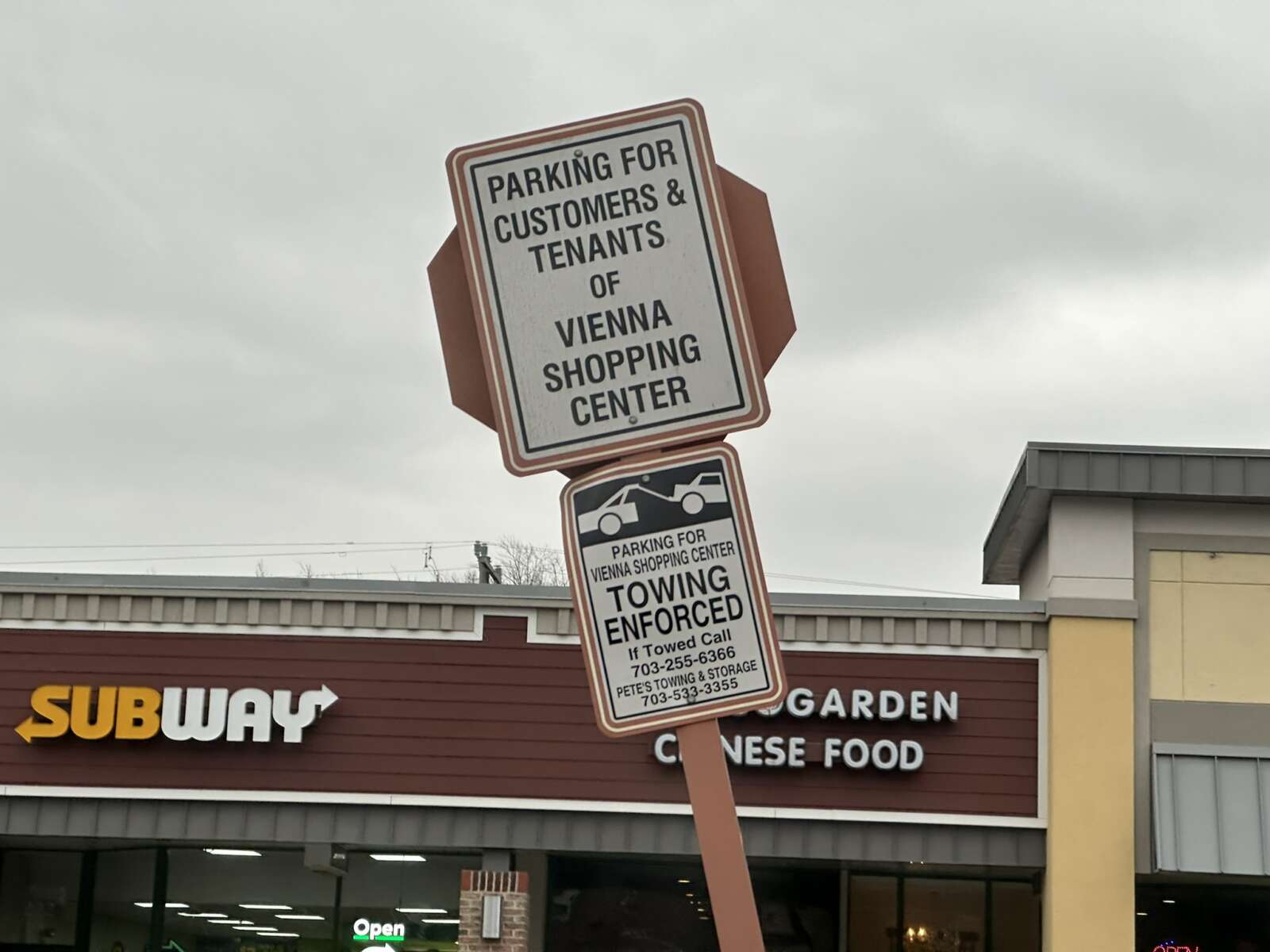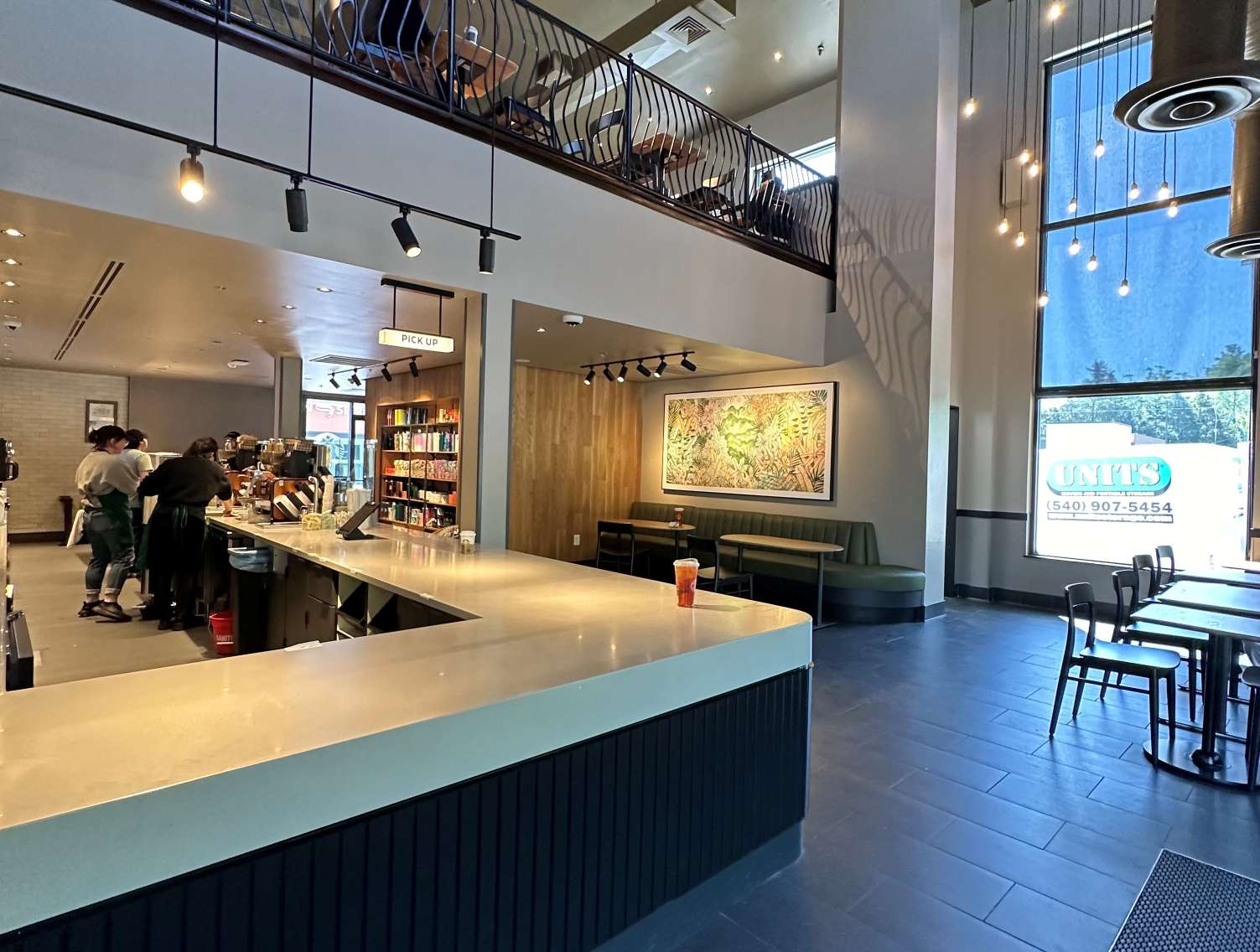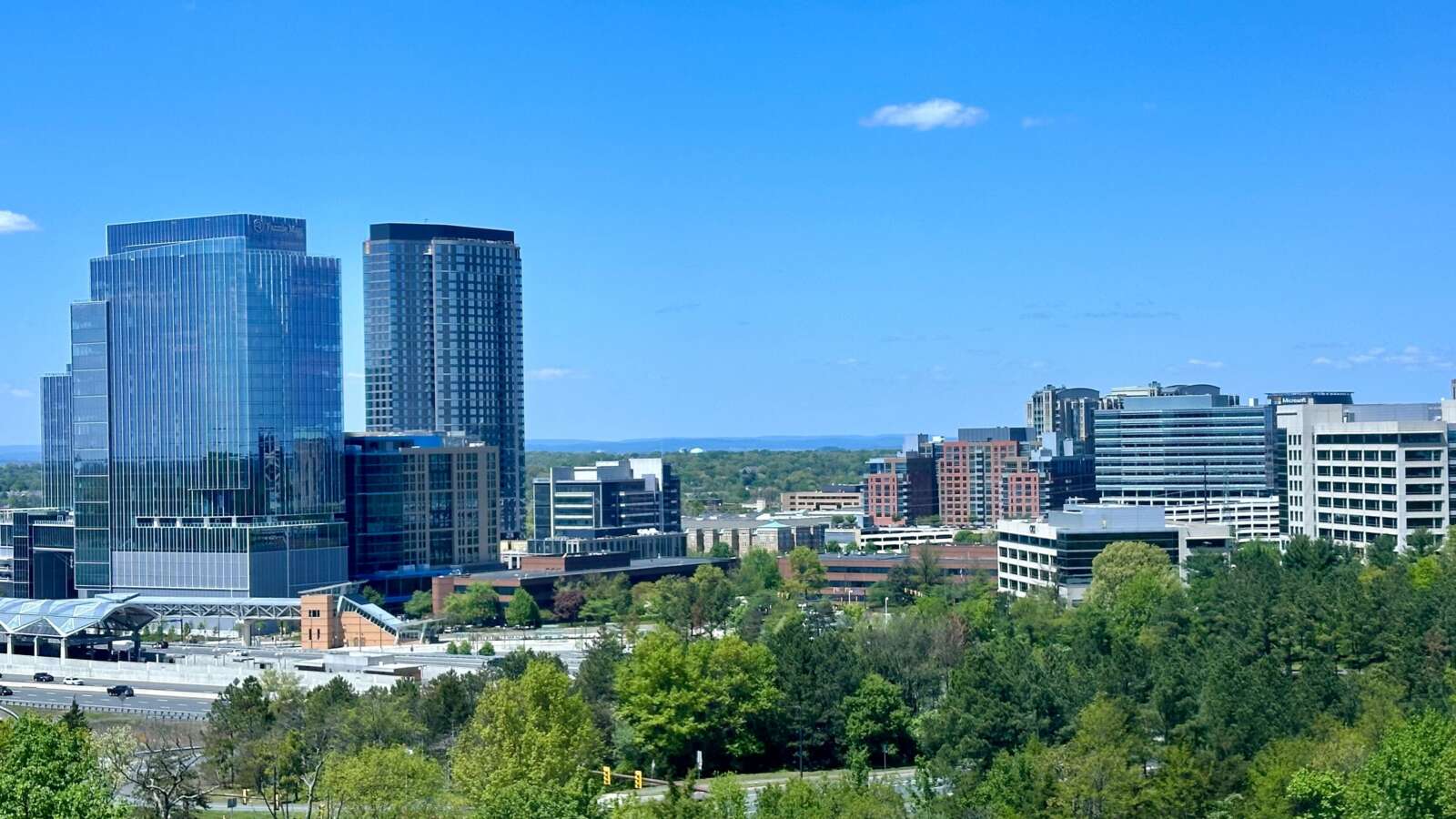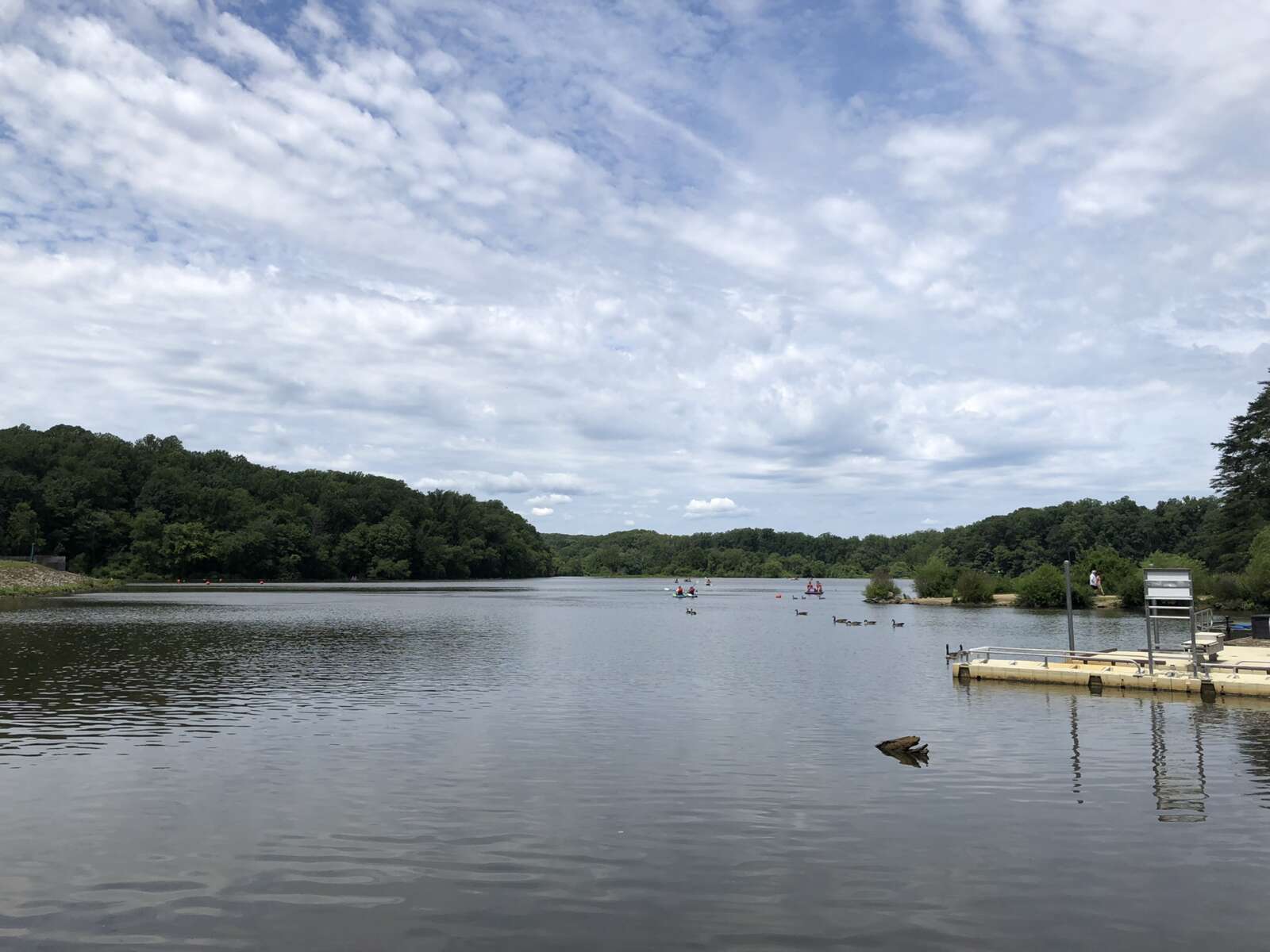Editor’s note: Over the next several weeks, Tysons Reporter is profiling the eight districts of Tysons. This is the fifth article in that series.
Tysons these days has a bit of a reputation as a cultural wasteland. Even today, that’s not quite true, and if the plans for Tysons West come to fruition it won’t be true at all.
The Tysons Comprehensive Plan envisions this area, which is centered on the Spring Hill Metro station, as one of Tysons’ four downtown districts, an “arts and entertainment center.” The plan calls for a high-density diversity of uses, “tree-lined streets”, and “a series of urban park spaces.” Over 18 million square feet of development, including what could be Tysons’ tallest tower, is in the works, and much of it (though not yet the tower) has been approved.
From Car Dealerships to Towers
Today, Tysons West is the least developed of Tysons’ four downtown areas. Much of the land is still covered by car dealerships. But the arrival of a more urban form of transportation — the Silver Line — has sparked intense plans for redevelopment.
These plans, although by a range of different developers, share many elements that characterize projects across Tysons. They’re dense, mixed-use, and are built with an eye for pedestrian accessibility, meaning that residents should be able to fulfill daily and weekly needs without motorized transportation. They’re outward-facing, with most attention and retail activity on the sidewalks of public streets rather than inside buildings or isolated courtyards. And they connect to one another, through a new grid of streets, helping residents of one development enjoy the amenities of another.
Many of these projects also promise to bring sports fields, for example in Dominion Square East, or provide funding for fields nearby.
There’s so much new development slated for this area that I can’t even list it all, but naming a few key projects should give a sense of the scope of the plans.
Dominion Square East, Dominion Square West, and Sunburst will all lie directly west of the Spring Hill Metro, within a five-minute walk. Combined, they will bring us at least 13 new buildings, as many as 3,100 residential units (20% of them to be designated for lower-income residents), over 200,000 square feet of commercial space, and several office towers. The Vesper Trail, which opened recently, passes through this area to connect to the Metro.
On the east side of Leesburg Pike, redevelopment adjacent to the Metro station is even flashier. Two developers are each proposing several buildings in the area. The first would include Tysons’ tallest tower, a 600-foot-tall skyscraper called the Iconic. The second would bring one of Tysons’ largest urban public spaces — a 2-acre “piazza.”
The tower would be just steps from the Metro entrance. The piazza would be located at ground level, open to the public from all directions, but insulated by buildings from the business of the streets nearby.
The third major area of redevelopment is simply called Spring Hill Station, though it’s actually located a block east of the station itself. This plan was the first, anywhere in Tysons, to be approved after the Comprehensive Plan for Tysons was approved, and has already been partially completed.
Together, these three redevelopments will bring close to 30 new buildings, most of them high-rises, to the area. They will house roughly 10,000 new residential units, along with offices, hotels, retail space, and — more here than anywhere else in Tysons — arts and culture.
It’s worth noting that these developments, while transformative, leave much of Tysons East untouched. Areas of the district lying more than a quarter of a mile from the Metro will remain mostly as they are — ready for another wave of development that is likely to follow once these towers are completed.
Cultural Ambitions
One of the key differences between a true city and a mere collection of buildings is the cultural life. As Tysons works to become “America’s Next Great City,” Fairfax is doing all it can to foster cultural vibrancy, especially in Tysons West. And while its tools are powerful, they are also limited.
The planned piazza will be home to a 20,000-square-foot community library. The development surrounding the 600-foot skyscraper will include both a 199-seat Black Box theater and an open-air amphitheater. It might also include a sky-high artistic “public gallery,” elevated 300 feet atop one of the buildings, although it’s unclear whether or not that idea is in the most recent proposal.
The ongoing Tysons West Promenade redevelopment, in the northwest corner of the district, also promises 3,500 square feet for a public art center. Fairfax County planners will continue working to strike similar deals with developers in the future, bringing more high-end arts and performance spaces to Tysons West. Almost all major developments have also committed to bringing public art to their accompanying civic spaces.
Another aspect of an entertainment center are the restaurant and retail options — including, hopefully, private art galleries — that will entertain those looking to stroll around town on a night out. For the Comprehensive Plan, these retail options will “form the basis of an arts and entertainment center and stay open after the workday ends.”
Arts centers, galleries, performance spaces, and public art — these are Fairfax’s tools. And while they can go a long way toward creating a vibrant place, they are all inherently a form of culture imposed from above, rather than culture organically rising from within the community.
But organic culture is in some ways more difficult. Ultimately, it requires financial accessibility — and nowhere in Tysons can a struggling artist find the kind of cheap studio space that makes somewhere like Richmond such an exciting artistic community. Still, Fairfax does have options for encouraging local art — tools like publicly-open arts or music education classes, or like the ARTSFAIRFAX artist in residency program.
Environmental Advantages of Redevelopment
Because some of the properties slated for redevelopment were first developed decades ago, in the Dark Ages of environmental regulation, they “currently allow untreated stormwater to flow directly into Old Courthouse Spring branch stream.” Fairfax County is making sure that modernization of the area includes appropriate environmental measures, including the capture of 97% of stormwater and “green roofs, bioretention areas, permeable pavement and underground vaults.”
The most important environmental benefit of redevelopment, though, is the way in which it will enable many more people to live a car-free or car-lite lifestyle, with easy access to the Metro and to destinations accessible on foot. Urban density is more sustainable for many reasons.
Perhaps it’s telling, environmentally as well as economically, that one of the only car dealerships planned to survive is a Tesla dealership.





